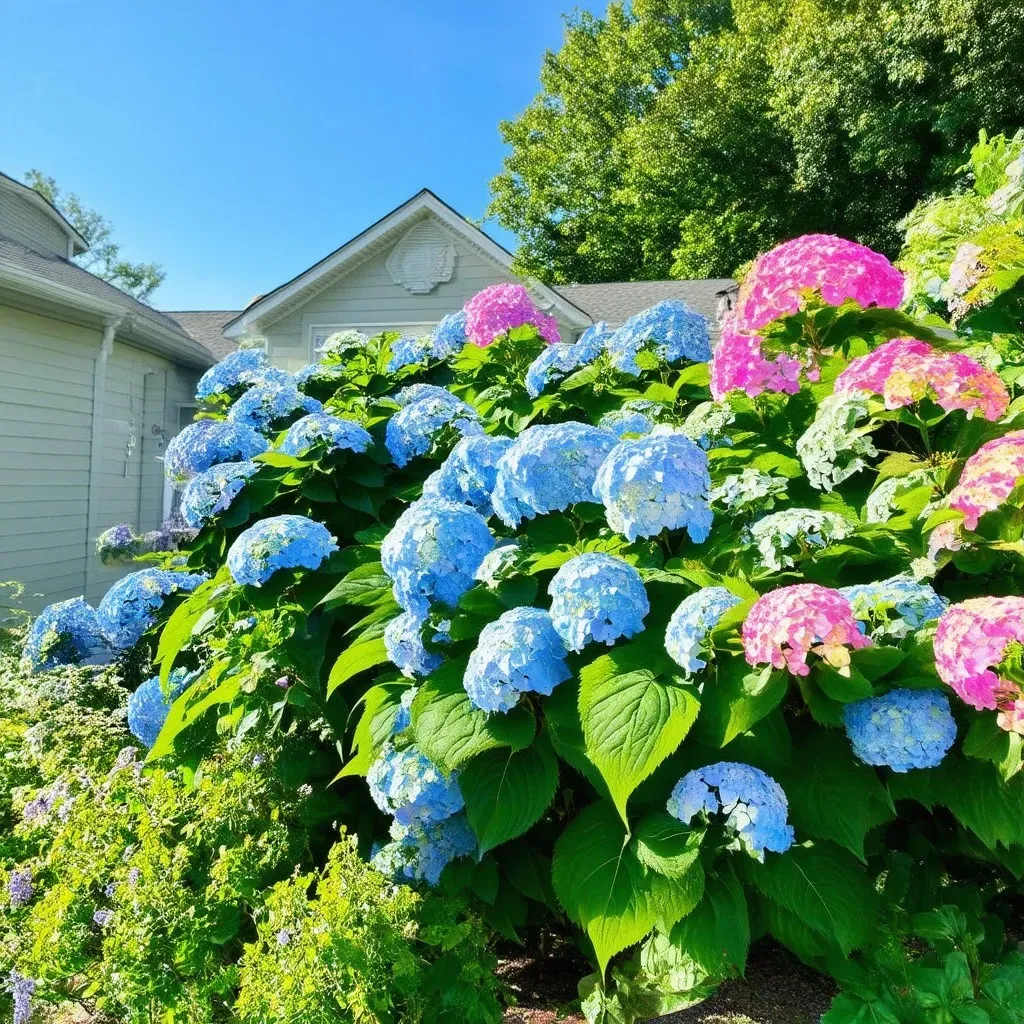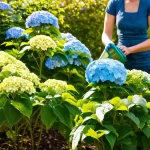When considering the perfect location for planting hydrangeas, the question arises: "What side of the house do you plant hydrangeas?" The east side is commonly regarded as the best option, as it allows these stunning plants to bask in the gentle morning sun while enjoying the soothing shade during the hotter afternoon hours.
Optimal Sides for Planting Hydrangeas
East Side of the House
Hydrangeas thrive best when planted on the east side of the house. This location offers an ideal balance of sunlight exposure and shade, which is crucial for optimal growth. The morning sun warms the plants, promoting healthy blooming, while the afternoon shade protects them from the harsher, more intense sun.
-
Benefits of East Side Planting:
- Provides 4-6 hours of morning sunlight
- Protects from afternoon heat
- Encourages vibrant flower colors
- Reduces risk of sunburn on leaves
North Side of the House
For those who may not have an east-facing side available, the north side of the house can be a suitable alternative. This side typically receives partial sunlight, especially in the morning, making it suitable for certain hydrangea varieties that prefer a little less sun.
-
Advantages of North Side Planting:
- Consistent, moderate light exposure
- Suitable for bigleaf and smooth hydrangeas
- Reduces risk of wilting in direct afternoon sunlight
Sunlight Hours Comparison Table
| Side of the House | Morning Sunlight (Hours) | Afternoon Shade |
|---|---|---|
| East | 4-6 | Yes |
| North | 2-4 | Yes |
| West | 6-8 | Limited |
| South | 6-8 | Minimal |
Growing Hydrangeas on the South and West Side
Planting hydrangeas on the south side of the house is generally not recommended due to excessive heat exposure, which can lead to wilting and burning of the leaves. Hydrangeas require moderation in sunlight; too much direct sunlight can be detrimental, especially during the hottest parts of the day.
On the west side, while hydrangeas can thrive if adequately watered, they may still suffer from afternoon heat stress. If you choose to plant here, ensure that the soil is rich in moisture and consider using mulch to retain soil hydration.
Factors to Consider When Planting Hydrangeas
Beyond the side of the house, several factors can influence the optimal planting location for hydrangeas:
-
Soil Quality:
- Hydrangeas prefer well-draining soil enriched with organic matter. Conduct a soil test to determine pH levels, aiming for slightly acidic to neutral soil (pH 5.5-7.0).
-
Watering Requirements:
- Adequate watering is essential, especially if planting on the south or west side. Hydrangeas generally need deep watering once or twice a week during the growing season.
-
Air Circulation:
- Good air circulation helps prevent diseases. Avoid planting hydrangeas in overly congested areas or near fences where airflow is restricted.
-
Variety Selection:
- Some hydrangea varieties are more tolerant of sun than Others. For instance, Oakleaf and Panicled hydrangeas can handle more sun exposure than Bigleaf varieties.
Tips for Planting Hydrangeas Next to the House
Planting hydrangeas next to the house can create a lovely visual impact, but it’s important to ensure they have enough space to grow. When planting near structures, follow these guidelines:
- Distance: Ensure to plant at least 3-5 feet away from the foundation of the house.
- Controlled Growth: Regularly prune to control the size and shape of hydrangeas, preventing them from overcrowding walkways or windows.
Frequently Asked Questions
Can hydrangeas grow on the south side of the house?
While hydrangeas can technically grow on the south side, they may struggle with excessive heat. Afternoon shade is highly recommended to protect the plants.
What types of hydrangeas are best for shaded areas?
Bigleaf and Smooth hydrangeas tend to perform well in shaded areas. Varieties like Endless Summer are specifically bred for more versatile exposure to light.
How often should I water hydrangeas?
Hydrangeas typically need deep weekly watering. During dry spells, consider increasing watering frequency. Always check the soil moisture before watering to avoid over-saturating the soil.
Is it possible to grow hydrangeas in pots?
Yes, hydrangeas can be successfully grown in pots. Ensure your pot has good drainage and use high-quality potting soil.
What are some common diseases that affect hydrangeas?
Common hydrangea diseases include powdery mildew, leaf spot, and root rot. Proper spacing and watering techniques can mitigate these issues.
Conclusion
Choosing the correct side of the house to plant hydrangeas is crucial for achieving healthy growth and stunning blooms. Opt for the east side whenever possible, but keep in mind the needs of different hydrangea varieties and local climate conditions. Whether you seek to beautify your home or create serene garden spaces, understanding your hydrangeas’ requirements will help you cultivate lush and vibrant plants for years to come.
For more in-depth information on planting and caring for hydrangeas, consider visiting The Spruce.





